Opinion & Analysis
Fantasy Cheat Sheet: Frys.com Open
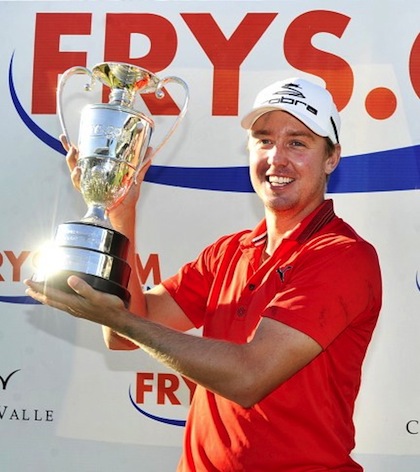
It’s only been two days since the Presidents Cup wrapped up with a decisive U.S. victory over the International team and already the PGA Tour season has begun. As part of the changes to its scheduling, this week’s Frys.com Open at CordeValle Golf Club in San Martin, Calif., is the first official event on the new wrap-around 2013-14 calendar. As a result, the winner of the tournament will get 500 FedEx Cup points and a sweet little invite to the Masters.
Last year, Sweden’s Jonas Blixt picked up his first Tour victory in his 19th start at the Fry.com Open, earning a nice $900,000 paycheck and kickstarting a season where he would go on to win the Greenbrier Classic and make the TOUR Championship. And that was before the added incentives; suffice to say, there’s a lot to play for if you’re not among the world’s elite.
Many fantasy gamers will notice certain sites won’t start their fantasy season until the Hyundai Tournament of Champions in January. But most of us degenerate gamers will just find the few that are open and ride that high right through the winter break. So without further ado, here’s a look at the Frys.com Open and the golfer’s who could strike gold, those that will inevitably grace the top of the leader board and those combustibles you should run far away from. It’s Risk, Reward, Ruin.
RISK
Current form says a lot about how a golfer will perform, just as much as course familiarity. The sport is all about confidence, and if you enter a tourney with it, good things are likely to happen.While there is certainly risk with taking one of these five, now is also the time to take a risk or two, as you have plenty of time to dig yourself out of a hole and you may even get a big leg up.
Trevor Immelman
The former Masters champion has had a rough go of it the last few years with an array of injuries. But towards the latter part of this year, he finally got healthy. And what you saw was a golfer, still only 33, who’s found his swing again. He won the Web.com Tour’s Hotel Fitness Championship in September by a stroke over Patrick Cantlay, shooting in the mid 60s each day to hit 20-under. He’s a sneaky pick.
The International Team
Maybe you’re surprised not to see Marc Leishman on the reward list, and he for sure could wind up at the top, but the risk for him, Angel Cabrera and Hideki Matsuyama is one of fatigue. Coming off a long Tour season and then a draining Presidents Cup loss, having to fly to northern Cali and compete is a tough task to ask any golfer, but that’s not to say it can’t be done. Leishman, the 2012 Travelers champ, is the pick if you’re going with any of the three.
The Web.com Tour Graduates
The opposite of the Internationals is the newly minted kids coming out of the lesser Tour. But, man, are these kids talented and hungry. Earning one win, such as Russell Henley did last season in the first start of his career at the Sony, could jumpstart a career.
Max Homas won an NCAA individual title in June for the University of California. Justin Thomas led Alabama to a team title. Both then-amateurs led the U.S. to a Walker Cup win in New York in September.
Then there’s John Peterson, whom you may remember holding his own in the 2012 U.S. Open at the Olympic Club, finishing in a tie for fourth after needing sectional qualifying to get in. Peterson played nine events on Tour in 2012 and just won the Web.com Tour Finals, earning fully exempt status for this year.
And finally, you have many an unknown, but don’t rule them out. Hudson Swafford’s college teammates at Georgia were Henley, Harris English (also a first-time winner on Tour last year) and Brian Harman (in the field). Not bad for the three-time All-American who has played strong down the stretch. Not having a layoff and coming in hot and hungry could be a recipe for success, especially when so much is on the line.
Jeff Overton
I wonder if this isn’t the year Overton finally breaks through and gets his first win. He has four second-place finishes on Tour and made the 2010 Ryder Cup team. That kind of talent means a win is coming sooner rather than later.
Jimmy Walker
He was Mr. Consistency to start last season, going 15 tournaments without a missed cut. He also finished tied for fourth at last year’s Frys.com Open, shooting a tournament-low 62 on Sunday. He finished T2 behind Blixt at the Greenbrier, but he has yet to win on Tour, meaning you play him to get you points, just not necessarily the max.
REWARD
I strongly believe in asking yourself, “Who should win this tournament?” And until a golfer is faced with the position of defending a 54-hole lead, or being paired with Tiger Woods on a Sunday, or having to make a crucial, potentially tournament-winning putt, it can be hard to pull the trigger on someone under the radar. Let’s face it; you need points, so go for the chalk. They’re front runners for a reason, entering hot and with a proven track record of winning.
Jonas Blixt
The defending champion is a must as he’s one of the Tour’s best putters. Winning at the Greenbrier only further cemented his status as one to watch in the years to come. All he needed was confidence (and I’m not talking about the kind that causes you to wear all orange when paired with Rickie Fowler.) Blixt has it.
Patrick Reed
Most of us love a heart-warming story. The golfer who survived six Monday qualifiers during the season, whose new wife caddies for him, and who finally breaks though with a win. But Reed’s win at the Wyndham Championship only solidified what many have known for a while— he’s here to stay. You don’t win back-to-back NCAA team titles at August State without moxie. Reed is on a roll and being in this field proves he wants his name at the top of the FedEx Cup standings for years to come.
Gary Woodland
Woodland is a lot like Immelman in that he had some minor injuries derail him. Always one of the longest hitters on Tour, he needed help in the other aspects of his game. He won the Transitions Championship in 2011, but it wasn’t until this August, after a swing overhaul, that he won again, snagging the Reno-Tahoe Open title while the big names were playing the WGC-Bridgestone Invitational. He parlayed that victory into a ride to the Tour Championship. Any multiple winner on a hot streak strongly needs to be considered.
Billy Horschel
Horschel started the year on fire and finally picked up a win in April at the Zurich Classic. He admitted, however, that the middle part of his year was not fun as he grinded to make cuts and enjoy the game. Finally towards the end of the year, he began regaining the form that made him a regular fantasy selection. Now with a month break, the Christian Bale look alike should perform well in a tournament where he’s finished T29-T7 the last two years.
Guys Named Tim
Tim Clark, Tim Petrovic, Tim Herron. All have performed well over the years in this tournament, whether it was at CordeValle or previously in Scottsdale, Ariz. Clark, the long-puttered South African hasn’t won a tournament in three years, when he took home The Players Championship, but he is a staple of consistency tee-to-green and finished T6 in his only trip to CordeValle. You can make a strong case for last year’s runner-up Petrovic here as he’s the proverbial horse-for-the-course. Herron has also fared well with a T13 in 2010, but my pick would be Clark— a guy regularly in the fairway, creating birdie chances.
RUIN
This section may as well be titled “Aaron Baddeley’s Guide to Missing Cuts.” And that’s the last thing you want to do in a fantasy game when any points earned can make the difference in a segment or season result. Two years ago, my season went swimmingly. I won multiple weeks and put up huge numbers. The overall and segment titles were easy pickin’. Last year, I won one week, but I was consistent every week and by the end was able to retain my overall title when others were hit-or-miss. Don’t handicap yourself with golfers that will regularly miss cuts.
Aaron Baddeley
Every MC is between the Aussie’s head right now. Normally a solid putter, he’s become too cerebral and his scores are rising. He started last year well, but then ran off a string of 10 straight MC’s and 12 in his last 14 tournaments. To be honest, I’m surprised he’s playing this tournament because no one needs an extended break and a six-pack of Foster’s more than Baddeley. But then again, maybe ending the FedEx Cup Playoffs early at The Barclays was enough time to fix what ails him. But for now, steer clear.
Rory Sabbatini
I still laugh when I think of Rory getting into a war of words with Tiger six years ago. The irony is that’s all Sabbatini is— he’s a dog with tons of bark and no bite (and big hats). Every once in a while the dog will find a bone, toss a 65 out there and make you think he could put together four solid rounds. But then he tucks tail and runs back in the doghouse from whence he came.
Former Major Champions
With apologies to Immelman, who I believe to be trending upward, other past major champions are to be strongly avoided. Stewart Cink, Y.E. Yang, Retief Goosen and Mike Weir show no signs of making it to the weekend, Vijay Singh is still trying to find the next deer antler velvet loophole and Lucas Glover’s game seems to be directly tied to his facial hair growth. He’s clean-shaven at the moment, which means he’ll make like a follicle and get cut.
For all your fantasy questions and lineup inquiries, please contact me on Twitter @bricmiller. Enjoy the season!
Opinion & Analysis
The 2 primary challenges golf equipment companies face

As the editor-in-chief of this website and an observer of the GolfWRX forums and other online golf equipment discourse for over a decade, I’m pretty well attuned to the grunts and grumbles of a significant portion of the golf equipment purchasing spectrum. And before you accuse me of lording above all in some digital ivory tower, I’d like to offer that I worked at golf courses (public and private) for years prior to picking up my pen, so I’m well-versed in the non-degenerate golf equipment consumers out there. I touched (green)grass (retail)!
Complaints about the ills of and related to the OEMs usually follow some version of: Product cycles are too short for real innovation, tour equipment isn’t the same as retail (which is largely not true, by the way), too much is invested in marketing and not enough in R&D, top staffer X hasn’t even put the new driver in play, so it’s obviously not superior to the previous generation, prices are too high, and on and on.
Without digging into the merits of any of these claims, which I believe are mostly red herrings, I’d like to bring into view of our rangefinder what I believe to be the two primary difficulties golf equipment companies face.
One: As Terry Koehler, back when he was the CEO of Ben Hogan, told me at the time of the Ft Worth irons launch, if you can’t regularly hit the golf ball in a coin-sized area in the middle of the face, there’s not a ton that iron technology can do for you. Now, this is less true now with respect to irons than when he said it, and is less and less true by degrees as the clubs get larger (utilities, fairways, hybrids, drivers), but there remains a great deal of golf equipment truth in that statement. Think about it — which is to say, in TL;DR fashion, get lessons from a qualified instructor who will teach you about the fundamentals of repeatable impact and how the golf swing works, not just offer band-aid fixes. If you can’t repeatably deliver the golf club to the golf ball in something resembling the manner it was designed for, how can you expect to be getting the most out of the club — put another way, the maximum value from your investment?
Similarly, game improvement equipment can only improve your game if you game it. In other words, get fit for the clubs you ought to be playing rather than filling the bag with the ones you wish you could hit or used to be able to hit. Of course, don’t do this if you don’t care about performance and just want to hit a forged blade while playing off an 18 handicap. That’s absolutely fine. There were plenty of members in clubs back in the day playing Hogan Apex or Mizuno MP-32 irons who had no business doing so from a ballstriking standpoint, but they enjoyed their look, feel, and complementary qualities to their Gatsby hats and cashmere sweaters. Do what brings you a measure of joy in this maddening game.
Now, the second issue. This is not a plea for non-conforming equipment; rather, it is a statement of fact. USGA/R&A limits on every facet of golf equipment are detrimental to golf equipment manufacturers. Sure, you know this, but do you think about it as it applies to almost every element of equipment? A 500cc driver would be inherently more forgiving than a 460cc, as one with a COR measurement in excess of 0.83. 50-inch shafts. Box grooves. And on and on.
Would fewer regulations be objectively bad for the game? Would this erode its soul? Fortunately, that’s beside the point of this exercise, which is merely to point out the facts. The fact, in this case, is that equipment restrictions and regulations are the slaughterbench of an abundance of innovation in the golf equipment space. Is this for the best? Well, now I’ve asked the question twice and might as well give a partial response, I guess my answer to that would be, “It depends on what type of golf you’re playing and who you’re playing it with.”
For my part, I don’t mind embarrassing myself with vintage blades and persimmons chasing after the quasi-spiritual elevation of a well-struck shot, but that’s just me. Plenty of folks don’t give a damn if their grooves are conforming. Plenty of folks think the folks in Liberty Corner ought to add a prison to the museum for such offences. And those are just a few of the considerations for the amateur game — which doesn’t get inside the gallery ropes of the pro game…
Different strokes in the game of golf, in my humble opinion.
Anyway, I believe equipment company engineers are genuinely trying to build better equipment year over year. The marketing departments are trying to find ways to make this equipment appeal to the broadest segment of the golf market possible. All of this against (1) the backdrop of — at least for now — firm product cycles. And golfers who, with their ~15 average handicap (men), for the most part, are not striping the golf ball like Tiger in his prime and seem to have less and less time year over year to practice and improve. (2) Regulations that massively restrict what they’re able to do…
That’s the landscape as I see it and the real headwinds for golf equipment companies. No doubt, there’s more I haven’t considered, but I think the previous is a better — and better faith — point of departure when formulating any serious commentary on the golf equipment world than some of the more cynical and conspiratorial takes I hear.
Agree? Disagree? Think I’m worthy of an Adam Hadwin-esque security guard tackle? Let me know in the comments.
@golfoncbs The infamous Adam Hadwin tackle ? #golf #fyp #canada #pgatour #adamhadwin ? Ghibli-style nostalgic waltz – MaSssuguMusic
Podcasts
Fore Love of Golf: Introducing a new club concept

Episode #16 brings us Cliff McKinney. Cliff is the founder of Old Charlie Golf Club, a new club, and concept, to be built in the Florida panhandle. The model is quite interesting and aims to make great, private golf more affordable. We hope you enjoy the show!
Opinion & Analysis
On Scottie Scheffler wondering ‘What’s the point of winning?’

Last week, I came across a reel from BBC Sport on Instagram featuring Scottie Scheffler speaking to the media ahead of The Open at Royal Portrush. In it, he shared that he often wonders what the point is of wanting to win tournaments so badly — especially when he knows, deep down, that it doesn’t lead to a truly fulfilling life.
View this post on Instagram
“Is it great to be able to win tournaments and to accomplish the things I have in the game of golf? Yeah, it brings tears to my eyes just to think about it because I’ve literally worked my entire life to be good at this sport,” Scheffler said. “To have that kind of sense of accomplishment, I think, is a pretty cool feeling. To get to live out your dreams is very special, but at the end of the day, I’m not out here to inspire the next generation of golfers. I’m not out here to inspire someone to be the best player in the world, because what’s the point?”
Ironically — or perhaps perfectly — he went on to win the claret jug.
That question — what’s the point of winning? — cuts straight to the heart of the human journey.
As someone who’s spent over two decades in the trenches of professional golf, and in deep study of the mental, emotional, and spiritual dimensions of the game, I see Scottie’s inner conflict as a sign of soul evolution in motion.
I came to golf late. I wasn’t a junior standout or college All-American. At 27, I left a steady corporate job to see if I could be on the PGA Tour starting as a 14-handicap, average-length hitter. Over the years, my journey has been defined less by trophies and more by the relentless effort to navigate the deeply inequitable and gated system of professional golf — an effort that ultimately turned inward and helped me evolve as both a golfer and a person.
One perspective that helped me make sense of this inner dissonance around competition and our culture’s tendency to overvalue winning is the idea of soul evolution.
The University of Virginia’s Division of Perceptual Studies has done extensive research on reincarnation, and Netflix’s Surviving Death (Episode 6) explores the topic, too. Whether you take it literally or metaphorically, the idea that we’re on a long arc of growth — from beginner to sage elder — offers a profound perspective.
If you accept the premise literally, then terms like “young soul” and “old soul” start to hold meaning. However, even if we set the word “soul” aside, it’s easy to see that different levels of life experience produce different worldviews.
Newer souls — or people in earlier stages of their development — may be curious and kind but still lack discernment or depth. There is a naivety, and they don’t yet question as deeply, tending to see things in black and white, partly because certainty feels safer than confronting the unknown.
As we gain more experience, we begin to experiment. We test limits. We chase extreme external goals — sometimes at the expense of health, relationships, or inner peace — still operating from hunger, ambition, and the fragility of the ego.
It’s a necessary stage, but often a turbulent and unfulfilling one.
David Duval fell off the map after reaching World No. 1. Bubba Watson had his own “Is this it?” moment with his caddie, Ted Scott, after winning the Masters.
In Aaron Rodgers: Enigma, reflecting on his 2011 Super Bowl win, Rodgers said:
“Now I’ve accomplished the only thing that I really, really wanted to do in my life. Now what? I was like, ‘Did I aim at the wrong thing? Did I spend too much time thinking about stuff that ultimately doesn’t give you true happiness?’”
Jim Carrey once said, “I think everybody should get rich and famous and do everything they ever dreamed of so they can see that it’s not the answer.”
Eventually, though, something shifts.
We begin to see in shades of gray. Winning, dominating, accumulating—these pursuits lose their shine. The rewards feel more fleeting. Living in a constant state of fight-or-flight makes us feel alive, yes, but not happy and joyful.
Compassion begins to replace ambition. Love, presence, and gratitude become more fulfilling than status, profits, or trophies. We crave balance over burnout. Collaboration over competition. Meaning over metrics.
Interestingly, if we zoom out, we can apply this same model to nations and cultures. Countries, like people, have a collective “soul stage” made up of the individuals within them.
Take the United States, for example. I’d place it as a mid-level soul: highly competitive and deeply driven, but still learning emotional maturity. Still uncomfortable with nuance. Still believing that more is always better. Despite its global wins, the U.S. currently ranks just 23rd in happiness (as of 2025). You might liken it to a gifted teenager—bold, eager, and ambitious, but angsty and still figuring out how to live well and in balance. As much as a parent wants to protect their child, sometimes the child has to make their own mistakes to truly grow.
So when Scottie Scheffler wonders what the point of winning is, I don’t see someone losing strength.
I see someone evolving.
He’s beginning to look beyond the leaderboard. Beyond metrics of success that carry a lower vibration. And yet, in a poetic twist, Scheffler did go on to win The Open. But that only reinforces the point: even at the pinnacle, the question remains. And if more of us in the golf and sports world — and in U.S. culture at large — started asking similar questions, we might discover that the more meaningful trophy isn’t about accumulating or beating others at all costs.
It’s about awakening and evolving to something more than winning could ever promise.











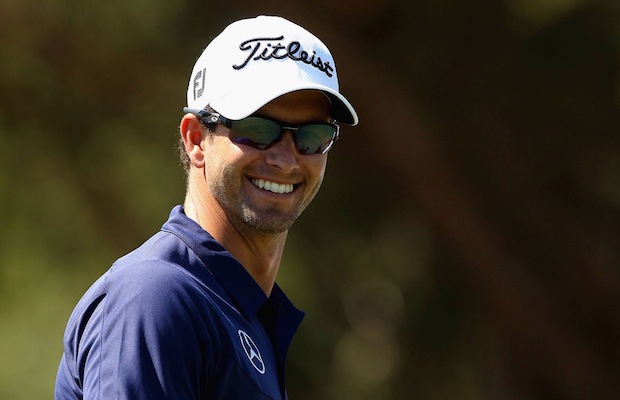
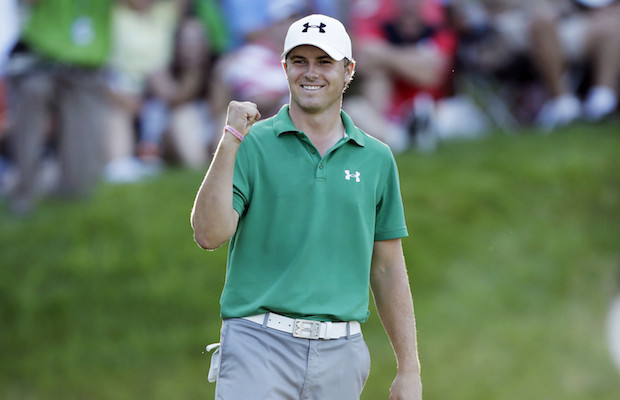
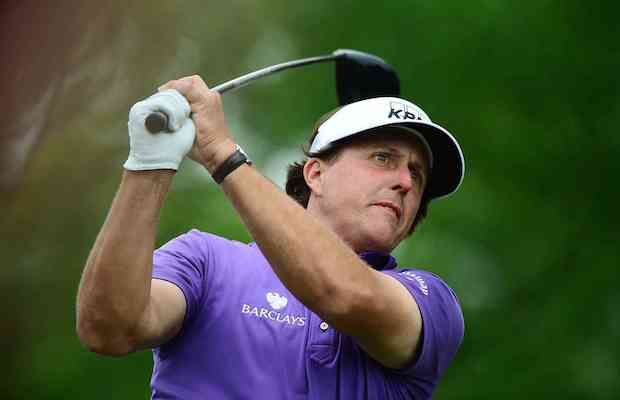
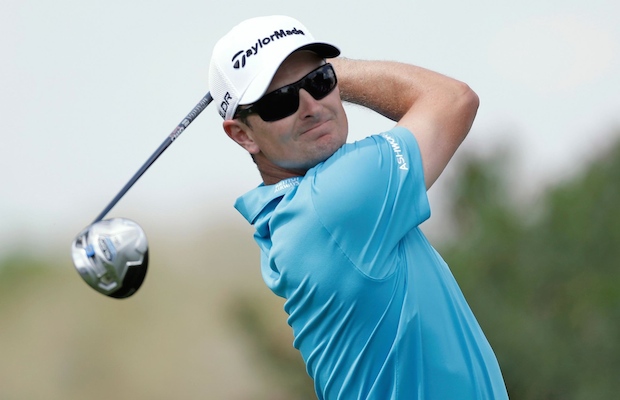
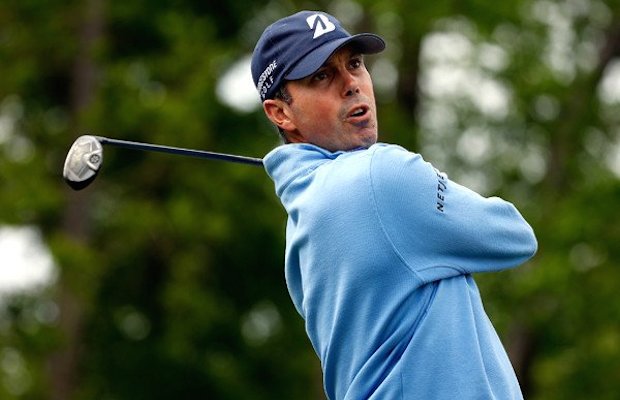









Kimberly Baresel
Oct 8, 2013 at 8:49 am
Great job, Brian!
patrick
Oct 7, 2013 at 11:43 pm
pretty cocky chirping major winners or any tour player for that matter. your trying to be funny but it sucks. how many pga events have you won?
Lon
Oct 7, 2013 at 10:50 pm
I’ll tell you, the real winner this week is the city of CordeValle. Every time I come here it gets hard to leave.
Great preview!
Brian Miller
Oct 7, 2013 at 11:48 pm
Shooter McGavin in the house!
Nick
Oct 7, 2013 at 11:50 pm
I’m starting to think you guys are putting something in the water